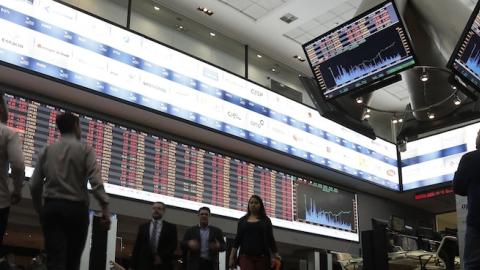Brazil’s economic slowdown is turning out to be as bad as many feared it would be, the Financial Times reports
Brazil’s economy officially slipped into recession in the second quarter as high inflation, plummeting consumer confidence and a roiling corruption scandal led gross domestic product to contract 1.9 per cent from the previous quarter.
The figure was even worse than economists had expected and was compounded by a big downward revision of first quarter data from a 0.2 per cent reduction in GDP to a 0.7 per cent decline.
Compared with the second quarter of last year, the economy has shrunk 2.6 per cent, the Brazilian Institute of Geography and Statistics said on Friday. After two consecutive quarters of negative growth, officials said the economy was formally in recession.
China’s slowdown drags heavily on Brazil, a country whose basic strategy for ten years has been to ride the Chinese tiger.
Meanwhile, the recession hits when the government is paralyzed. President Dilma Rouseff is at 8 percent in the polls, threats of impeachment are swirling, and the biggest corruption scandal in Brazilian history has dozens of politicians, including two ex-presidents, leaders of two of the three most important parties, and top congressional leaders, worried that they are going to jail.
The president’s authority in Congress has collapsed, and Congress doesn’t seem to be able to do anything: it can’t cut spending, it can’t raise taxes, and it can’t think of anything else to do. The public is furious and fearful; the economic blows are coming thick and fast as unemployment rises and consumer spending falls. Yesterday came news that (between the recession and the rapid depreciation of Brazil’s currency) international air traffic has fallen so far, so fast that luxury stores in the country’s main airport are shutting down.
What scares the older generation most is the apparent return of inflation. For decades in the 20th century, Brazil was regularly ravaged by some of the highest inflation rates in the world. New currencies were introduced, then depreciated so fast that the central bank could hardly print new, higher denomination bills fast enough to keep up. There were times when stores stopped posting prices on goods in the windows; prices would change so fast that it wasn’t worth it. At one time in the late 20th century, Brazil had three currencies circulating at the same time: 100,000 of the oldest one equaled 1 of the middle one; 10,000 of the middle one equalled one of the newest one. It got so bad that an association of the descendants of famous Brazilians demanded that the government stop putting their ancestors’ faces on currency bills, since it was more of an insult than an honor to be featured on such worthless money.
That all changed under Fernando Henrique Cardoso, who introduced the current currency, the real, more than 20 years ago. Ominously, the inflation rate reached almost ten percent in July of 2015—that’s the highest rate tin 12 years. Brazilians who remember the old days worry that the old troubles might come back—when hyperinflation strikes, bank accounts are wiped out, credit dries up, merchants won’t take credit cards, people who live on fixed incomes turn into paupers as a lifetime of saving and work can go down the tubes in a few weeks.
This latest cold shower of bad economic news won’t improve the country’s mood. We are a long way from those halcyon days just a few years ago when emerging markets were ruling the earth, and the BRICS were reshaping the global order.
The trouble comes at a bad time regionally. Brazil isn’t the only country in South America that bet the farm on continued exponential Chinese growth. Falling prices for commodities ranging from oil to copper to soybeans to beef are knocking one South American country after another into trouble. Many countries have already suffered under misguided populist regimes—Argentina, Ecuador, Venezuela are all looking fragile.
The United States had the luxury of not worrying very much about South America in the last 15 years. Thanks to the China boom, the region was growing even as American policy shifted towards benign neglect. The next president may have to rethink that approach: from Tijuana to Tierra del Fuego, Latin America could be on the brink of real trouble.

















